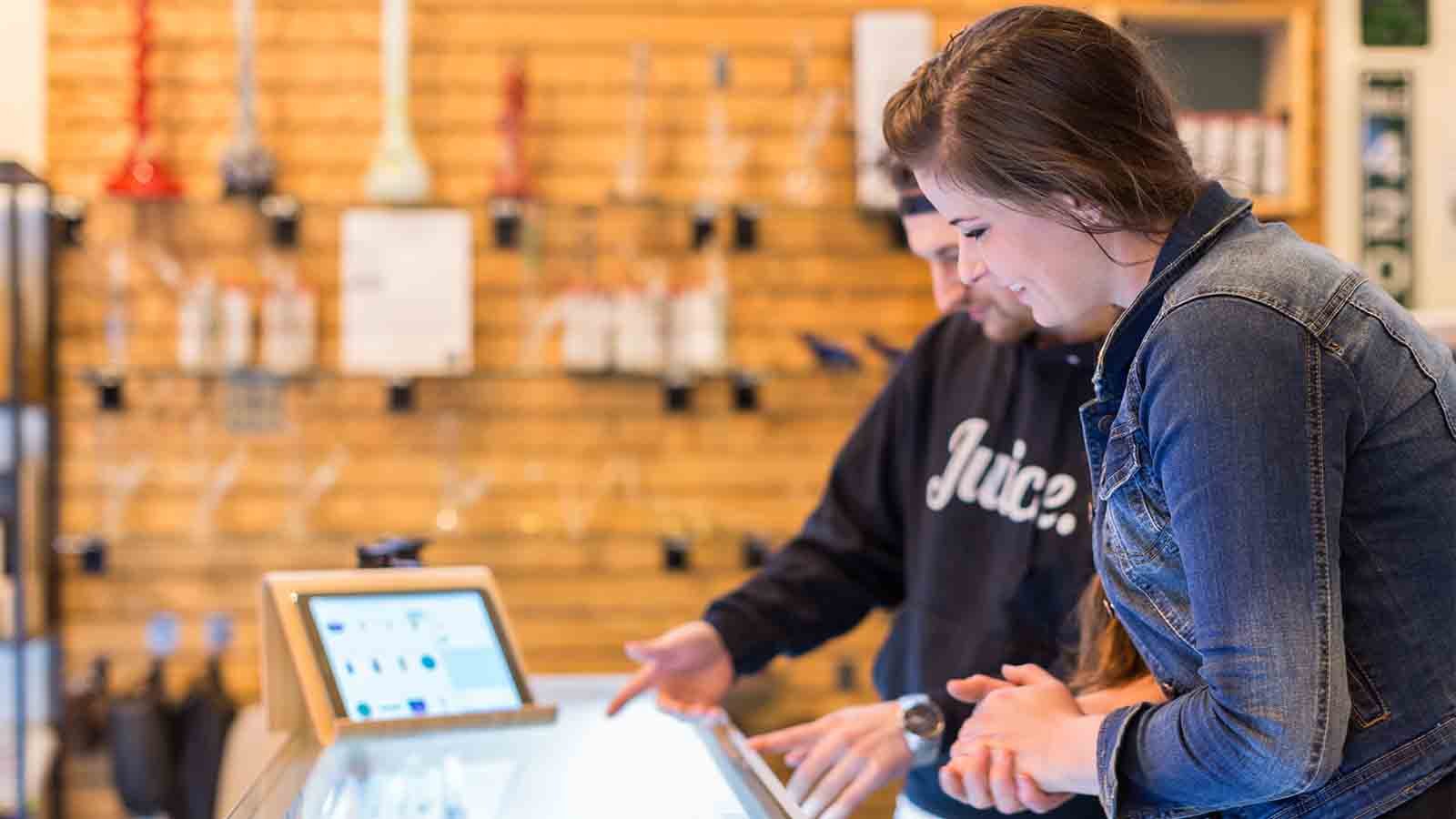 As the industry continues to shed the negative stereotypes and stigmas once heavily associated with cannabis consumption, dispensaries are seeing an uptick in visits from cannabis newcomers. These customers typically have plenty of questions about the various products they see on your shelves, including how to consume them, what kind of effects to expect, and, quite naturally, how much it’s going to cost.
As the industry continues to shed the negative stereotypes and stigmas once heavily associated with cannabis consumption, dispensaries are seeing an uptick in visits from cannabis newcomers. These customers typically have plenty of questions about the various products they see on your shelves, including how to consume them, what kind of effects to expect, and, quite naturally, how much it’s going to cost.
Long-time consumers in mature markets like Colorado and Washington can appreciate today’s cannabis price tags. Thanks to the efficiencies of legal, large-scale production, current cannabis prices represent a dramatic decrease from just a few years ago. These days, even premium product sells for a fraction of what it did in the early stages of legalization.
But for new consumers with no frame of reference, a first glance at some of today’s top-shelf price tags may trigger sticker shock. When that happens, you and your budtenders need to be prepared to educate customers on the factors that drive premium cannabis prices.
How to Communicate Premium Product Values
When it comes to retail, consumers will always pay more for premium-quality products. In the cannabis industry, that means top-shelf genetics cultivated in small batches will fetch higher prices.
In fact, craft cannabis is very comparable to craft beer, which is brewed in small batches with a primary focus on unique flavor profiles and the utmost quality. Domestic beer, on the other hand, is brewed on a massive scale in large, automated facilities. Both the difference in raw materials and the more labor-intensive manufacturing process are reflected in the higher price points of craft beers, just as they are in craft cannabis products.
What exactly goes into small-batch, craft cannabis production? Here are a few of the highlights:
- Genetics, media, and nutrients: As with any premium product, the higher cost of top-quality raw materials will be reflected in the price on the dispensary shelf. Craft growers shell out more for first-class genetics, specialized grow media like coco coir, and premium nutrients.
- Smaller bloom rooms: For cannabis cultivators, revenue is inextricably linked to the “bloom room” — the space in their facility dedicated solely to cannabis plants in the flowering stage of growth. Commercial-scale growers look to maximize bloom-room square footage and streamline production as much as possible, while small batch growers focus on smaller-sized bloom rooms in which their master growers can carefully tend to each individual plant in every crop.
- Hand trimming: While many licensed producers use automatic trimming machines to increase efficiency, small-batch growers trim their buds by hand. This hand-finished quality also requires higher labor costs, which consumers will see reflected in the final price.
- Testing: Mandatory tests for cannabis potency, cannabinoid content, contaminants, and pests are not cheap. Most producers submit the requisite amount of samples for testing — but many craft cultivators go beyond the minimum requirements and test every single batch in the name of quality control.
Employing cannabis retail technology in your store can help you and your staff communicate these product values; for example, with digital touchscreen menus, your customers will be able to read detailed information and compare products of varying price points. Additionally, arming your budtenders with mobile POS technology will empower them with in-depth product info at their fingertips so they can help customers better understand product pricing.
How to Avoid Sticker Shock
Of course, preventing sticker shock from occurring in the first place is ideal for any retailer. Consumers are attuned to perceived value, and the more elevated an experience your store can offer, the less price-sensitive customers will be.
Providing a more sophisticated experience includes incorporating modern dispensary design elements, but it goes beyond that, too. Using the right dispensary technology can help boost overall experience by offering differentiated in-store flows and allowing customers to shop the way they want.
Take ECO Cannabis for example; at this Oakland retail shop, customers can choose to expedite the purchasing process by using the self-service kiosk and express checkout. Alternatively, they can have a one-on-one, consultative visit with a budtender who assists them directly on the floor.
By treating your customers to an outstanding experience in a refined yet friendly environment, you’re demonstrating that you value their business — which helps them see the value of your products and makes them more receptive to premium price tags.
Want to Learn More?
If you’re ready to see exactly how cannabis retail technology can help treat and prevent sticker shock in your shop, contact us today to book a demo.
